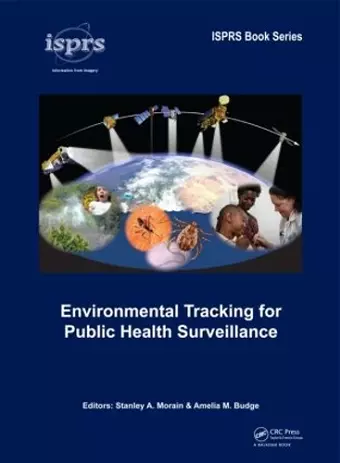Environmental Tracking for Public Health Surveillance
Stanley A Morain editor Amelia Budge editor
Format:Hardback
Publisher:Taylor & Francis Ltd
Published:25th Sep '12
Currently unavailable, our supplier has not provided us a restock date
This hardback is available in another edition too:
- Paperback£44.99(9781032919409)

Satellite imagery and data are widely used in public health surveillance to provide early warning of disease outbreaks and for averting pandemics. Convergence of these technologies began in the 1970s and has gained wide acceptance in the 21st Century.
Environmental Tracking for Public Health Surveillance focuses on the expanding use of satellite sensor imagery and long-term spectral measurements for assessing and modelling Earth’s environments in context of public health surveillance. It addresses vector-borne, air-borne, water-borne, and zoonotic diseases, and explores analytical methods for forecasting environmental conditions and their potential for consequent disease outbreaks. Infectious and contagious diseases are of particular interest in this volume because once parasite-vector-human host pathways are triggered by favourable biological circumstances, pandemic diseases can spread to global scale in a matter of hours. The chapters advance readers through three sets of material. Part I reviews the 1970-2012 history of satellite Earth-science surveillance technology that led to linking natural environments to human diseases, and more generally to public health applications. Part II describes specific infectious and contagious diseases and the threat of emerging and re-emerging diseases. Part III explores the kinds of satellite data, modelling, and electronic information systems being developed to expedite health intercessions and responses at local to regional and global scales of reference. Equally important are the extensive reference sections for chapters in Parts II and III. For readers interested in tracking the development of Earth-science technology, these constitute a thorough entrée to both the health and environmental literature.
The chapters are written jointly by experts in both the health and Earth-science technologies. Each chapter is accompanied by an extensive list of citations to provide background and validation of the current state-of-the-art for a variety of high-interest human diseases and associated health and well-being issues. The importance of day-to-day weather patterns, the impacts of severe weather events and longer-term climate cycles form the basis for developing information systems that meet goals and expectations of national and international health monitoring bodies.
Environmental Tracking for Public Health Surveillance provides a state-of-the-art overview on how environmental tracking data from satellite, airborne, and ground-based sensors are being integrated into appropriate geophysical and spatial information system models to enhance public health surveillance and decision-making from local to global levels, and is intended primarily for a...
"Environmental Tracking for Public Health Surveillance not only bridges the gap between the fields of satellite Earth observations and environmental and public health sciences, but also presents innovative applications of satellite-based Earth observation data in monitoring and forecasting of diverse vector-borne diseases while also highlighting efforts for better management of factors that comprise public health."
"The justification of this edition goes well beyond the need to bridge the gap betwee the fields of satellite remote sensing, environmental and public health sciences, and provide yet another book of compiled works of quality applied research. The book is well-organized and information is presented in a format to be quite ueseful as a valuable reference for anyone who is interested in the applications of satellite remote sensing in public health science research."
Mahtab A. Lodhi, University of New Orleans, in Photogrammetric Engineering and Remote Sensing journal, October 2013.
ISBN: 9780415584715
Dimensions: unknown
Weight: 1050g
480 pages